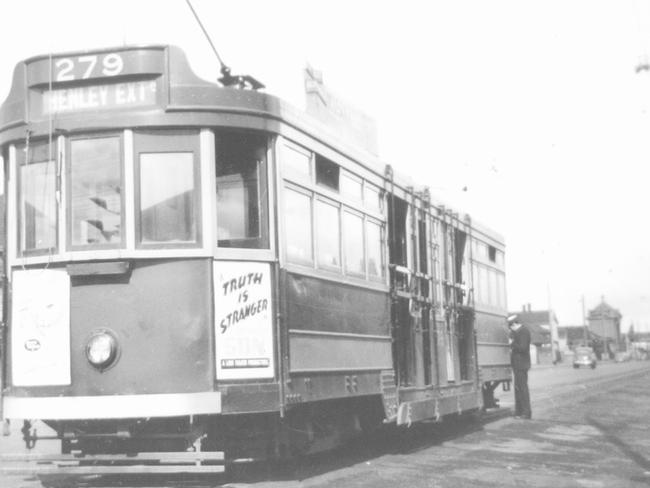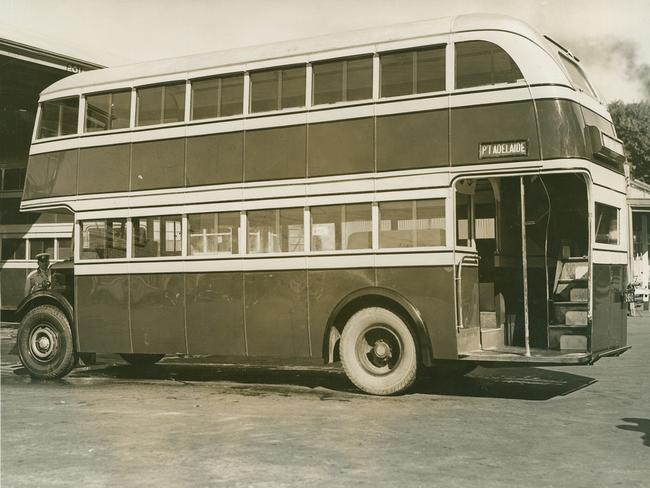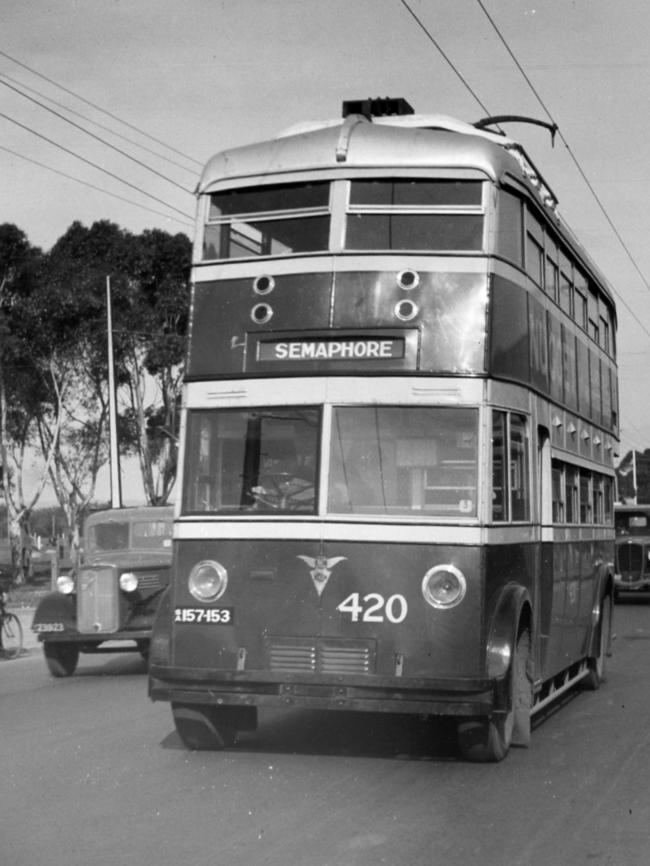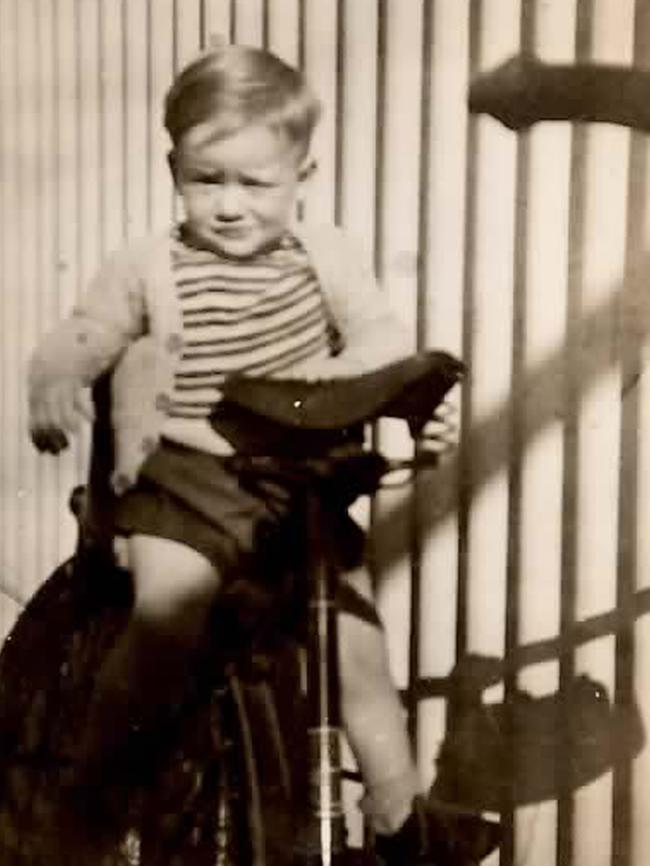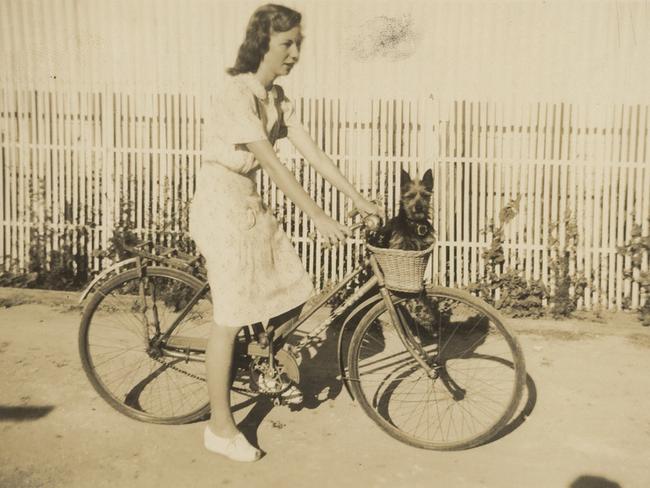The days of Adelaide’s wild bus rides
BACK before everyone had a car, you got around Adelaide on the tram or bus. But with dodging the ticket inspector, collisions from losing electrified cables and climbing the double decker stairs, it wasn’t the ride it is today.
- The jobs that time forgot
- The era of marching girls and parades
- How KESAB advertising changed over the years
- The days of the giant Port Noarlunga sandhills
WHEN I was a kid in the early 1950s, there were five ways to get anywhere. You walked, rode your bike, went by taxi, by bus, or by train.
The only person we knew with a car was my uncle Rex, who had a little soft-top Morris.
Of course, taxis didn’t have radios in those days so we would have to walk to the nearest phone box and call a taxi company or, as we often did, walk to a service station on Port Rd, where a small taxi company was based.
Even then, we’d have to wait for a taxi to finish a job and come back to base. We could sometimes wait an hour.
To come home, you’d have to book a taxi at a certain time and then be ready because the cab didn’t want to wait around.
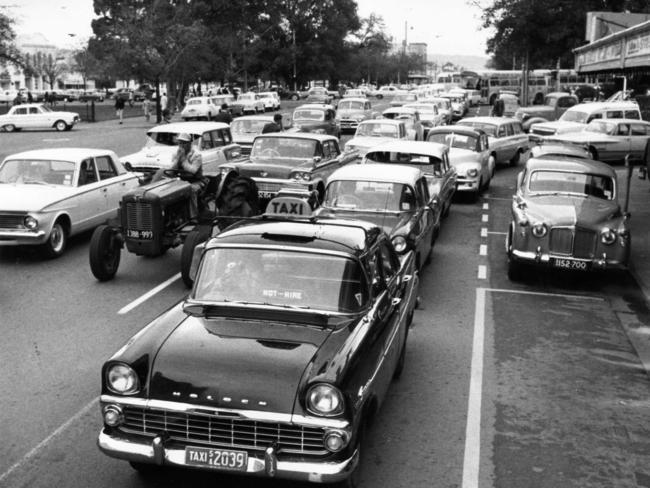
“Going out” wasn’t easy. We were a 10-minute walk from a main road, or five minutes by bike.
Mum rode everywhere on her bike with a little basket on the front.
Dad had a little wooden seat on the top bar of his bike where I sat and hung on to the handle bars for grim death.
As much as I tried to keep my feet out of the way of the front wheel, every so often my foot would drift in and we would go crashing off the bike. I can’t remember getting a belting, but I sure got yelled at a lot.
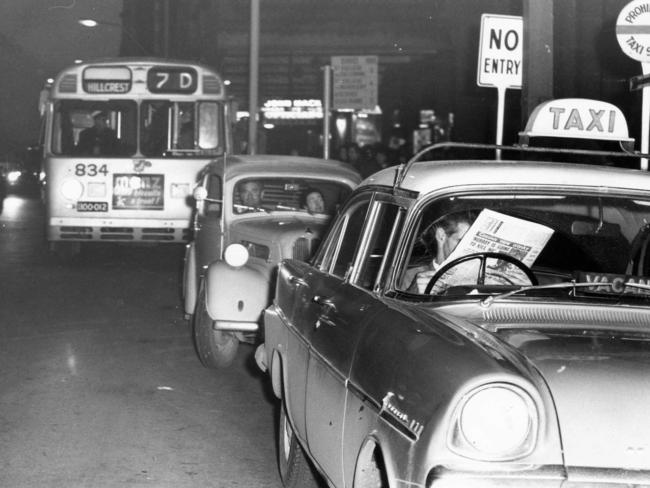
It was common for people to ride their bikes to a bus stop and just leave their bike resting up against a tree, a pole or a fence.
No one locked up their bikes — they’d still be there when they came back.
We’d jump on a bus if we wanted to go to the city or down to the Port or Semaphore, or my nanna and pappa down at Peterhead.
There were a number of different buses and every one fascinated me. On some, you could sit right by the driver and watch every thing he did.
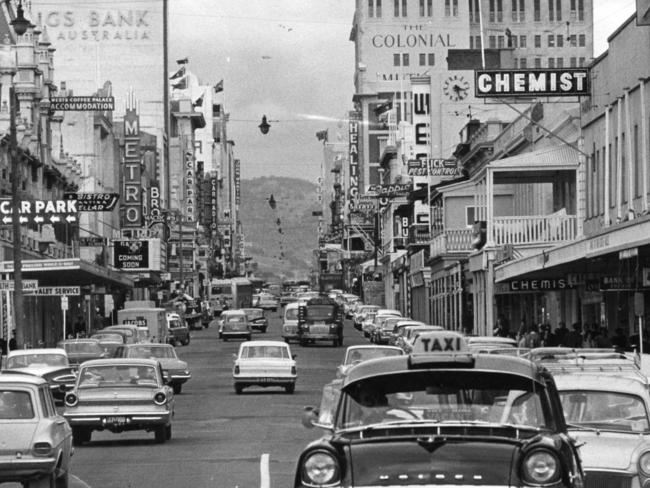
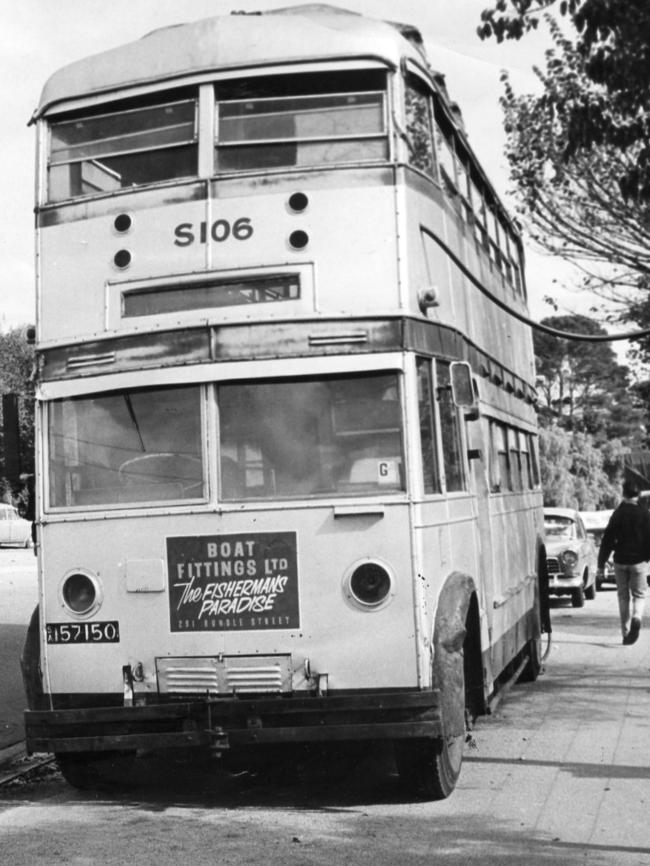
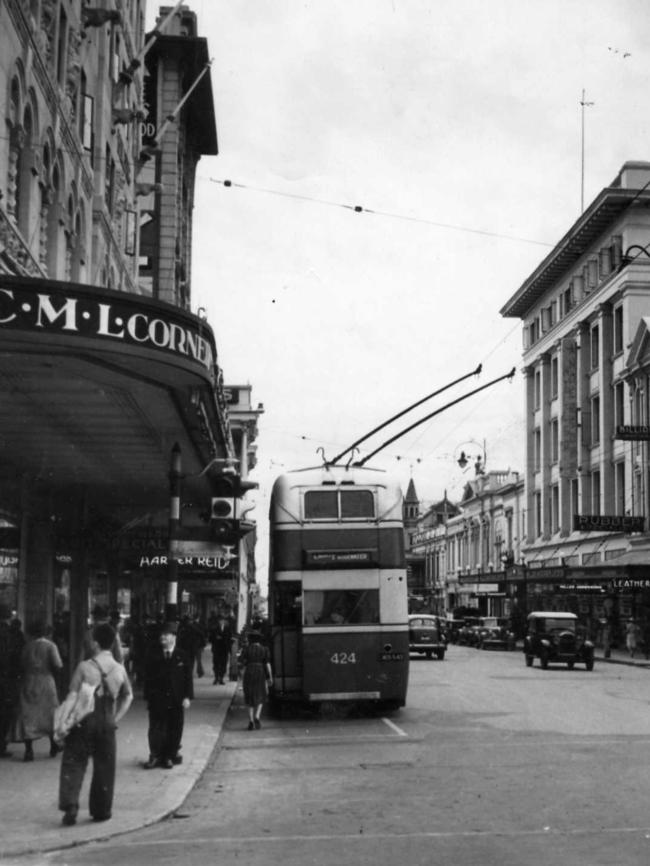
He’d grind the gears as he struggled with the “crash” gearbox, sometimes having a couple of goes at getting the lever in the right place.
Buses always had a conductor who strode up and down the aisle during peak hour, yelling “move right down the centre of the bus, please”.
This was to cram the standing passengers in a bit so more people could get on board. On the double-deckers, the conductor would shout “plenty of room upstairs” to encourage some people to risk their lives climbing the steel staircase of the rocking and swerving bus.
Another call was “anyone like change of a pound? Ten shillings?”, aimed at lightening the load of the money bag he had hanging around his neck.
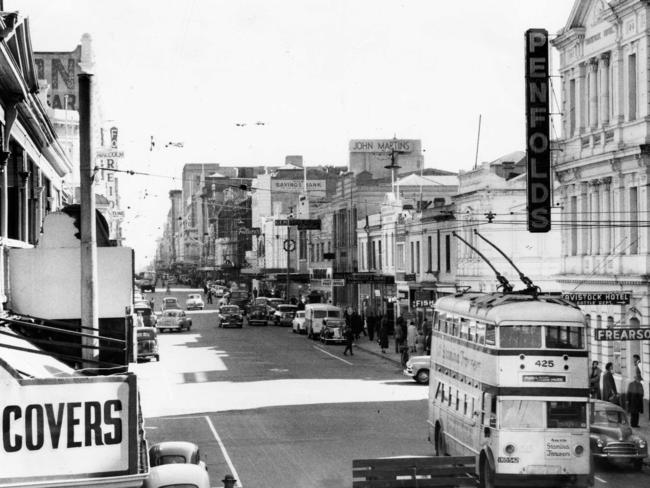
The trip was divided into sections and each cost a bit more. From this came the saying “he’s come to the end of the penny section”, meaning he’d gone as far as his money could take him.
For many people, times were tough and they would only travel part of the way home on the bus or tram, then they’d have to get off and walk the rest of the way.
People who were short of cash would always have their eyes looking ahead to see if an inspector was waiting to get on at the next stop. As he got on, they got off if their ticket had expired.
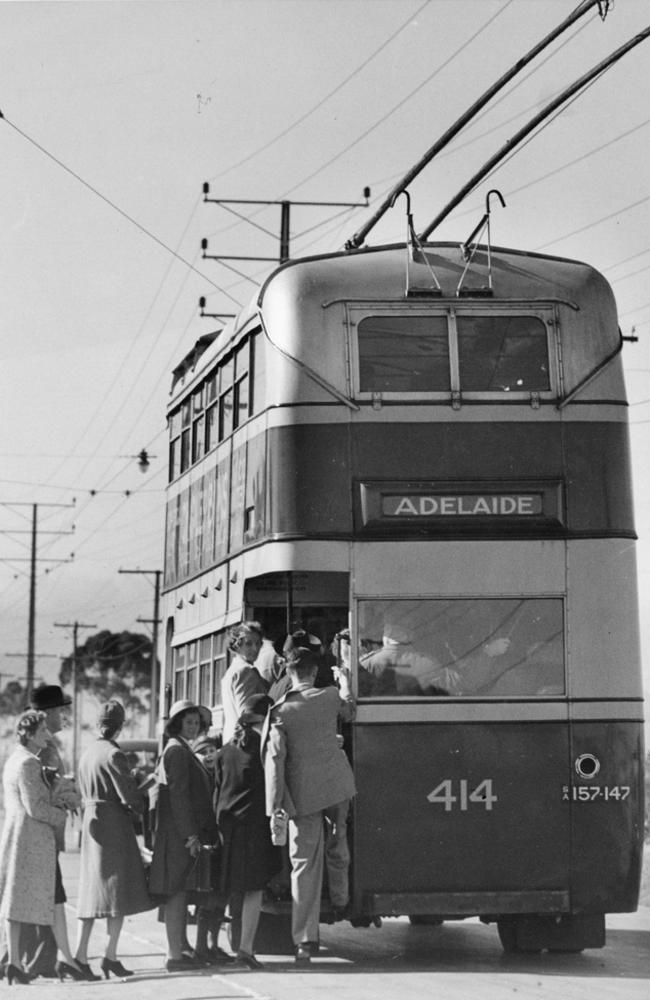
There were little numbers down each side of the ticket and the conductor would use a handheld punch to pierce the ticket at a certain section number.
If the inspector got on, a number of people would suddenly want the conductor to sell them a ticket.
Sometimes the inspector would actually wear a disguise, like a bulky coat and a cover over his uniform cap.
My favourite spots to travel on double-deckers were up top in the front seat or downstairs, under the stairwell on the back platform of the bus.
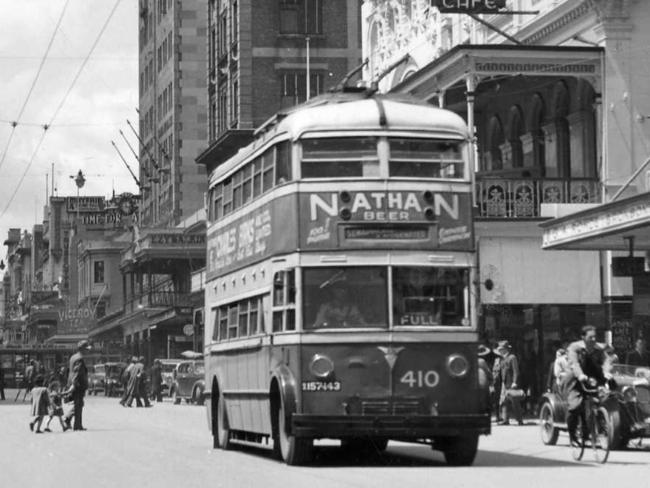
Many of the bus routes were electrified, and single and double-decker buses moved almost silently under a tangle of overhead wires.
Quite often the bus would travel out too far when turning a corner and the poles on top of the bus that run along the wires would break loose, causing the bus to come to a screeching halt right in the middle of the traffic.
The driver would have to get out and — using a long pole which was carried on the side of the bus — catch the bus top poles and pull them down on to the wires again.
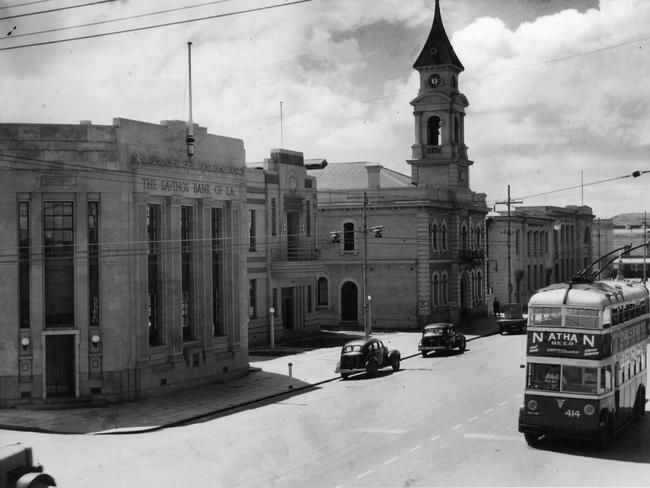
Many a chain collision was caused by the poles skidding off the cables and a bus stopping dead in its tracks.
Of course, passengers would fall over and the bus driver wouldn’t be too popular. Apart from the MTT buses, there were a number of private bus companies that ran short routes.
Bunny Brothers ran the bus along Tapleys Hill Rd as far as Queenstown. The thing I remember about them was the big hooks on the back of the buses, where mums would hang their pushers and prams and even bikes. Things were much simpler then.
